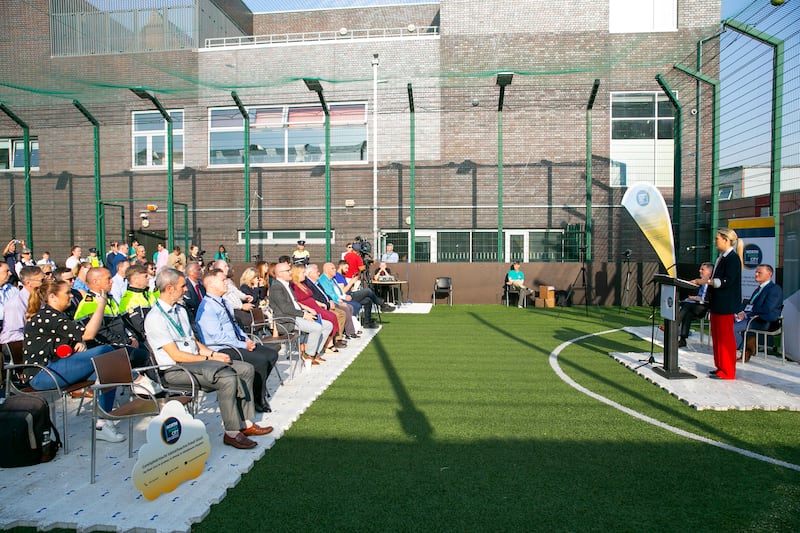The deployment of community safety wardens forms a core part of a new plan aimed at improving life in Dublin’s north inner city.
The plan, featuring 51 actions, was announced on Friday by Minister for Justice Helen McEntee and Minister for Public Expenditure Paschal Donohoe and Eddie Mullins, chair of the Dublin North Inner City Local Community Safety Partnership.
It includes initiatives around drug use prevention; stopping antisocial behaviour; providing youth and family oriented activity; education; integration; and improvements to the physical environment such as street lighting and cleaning.
It comes following a series of high profile assaults and incidents of street violence in the area over the summer, which prompted Ms McEntee to provide €10 million in additional funding for Garda overtime in Dublin, specifically to increase high visibility policing with a view to preventing crime.
RM Block
However, speaking at Ballybough Community Centre on Friday, Ms McEntee said the plan was wide-ranging and not just about “putting Garda boots on the ground” in Dublin 1.
Safety wardens
A central component is the community safety wardens, who are to be based at Wolfe Tone Square and O’Connell Street. The safety partnership has secured €150,000 to employ the wardens from the Community Safety Initiative Fund.
The wardens are to be highly visible on the streets, directing people to public transport and visitor attractions, helping to keep areas clean and playing an observational role when there is violent or antisocial behaviour. Ms McEntee said they would play a positive role in the community, but would not act as proxy gardaí or security guards.
“It’s about being a presence in the city centre. It’s about being visible and engaging with members of the community who are in the area but also linking in with businesses,” she said.

“It’s about identifying issues that arise. It’s not for wardens to take the role of An Garda Síochána. But they’re certainly working hand in hand. And I know we’re already linking and engaging with gardaí at O’Connell Street and Store Street and other stations as well.
“It is about having extra eyes and ears on the ground, understanding what’s happening in the community, being another voice for the community but also businesses as well.”
Speaking to reporters in Cork, Taoiseach Leo Varadkar said the idea of the safety wardens was not to replace gardaí but rather “to make sure that there is, you know, physical presence on busy streets”.
“Just somebody who’s offering what they call passive surveillance. Little bit like the neighborhood watch that we would have had in the past but an enhancement of that so it’s not a replacement for gardai - it’s additional,” he said, adding that the plan was to create such posts nationwide over time.
Mr Donohoe said the plan would make a difference to the community. It would be rolled out in tandem with recommendations from a longer-term strategy, the Mulvey report, compiled by mediator Kieran Mulvey, which examined the needs of the north inner city area following the violence seen at the height of the Kinahan-Hutch feud.
‘Symbol of neglect’
He said an example of the investment provided could be seen at St Lawrence O’Toole primary school on Sheriff Street, where a state-of-the-art building has been provided.
“The school is located at the heart of several areas which, for so many years, were a symbol of neglect, of not making progress. We now have a beautiful building which provides great support to young students,” the local TD said.
The area is one of the most ethnically diverse in the city, with 40 per cent of households non-Irish. However, Mr Mullins reminded those who attended the launch that the community has many fifth-generation Dubliners who are very proud of their roots and their city.
A wide number of agencies will have a role in implementing the plan’s actions including the HSE, Tusla, the Department of Education, the Department of Justice, the Probation Service and An Garda Síochána.















